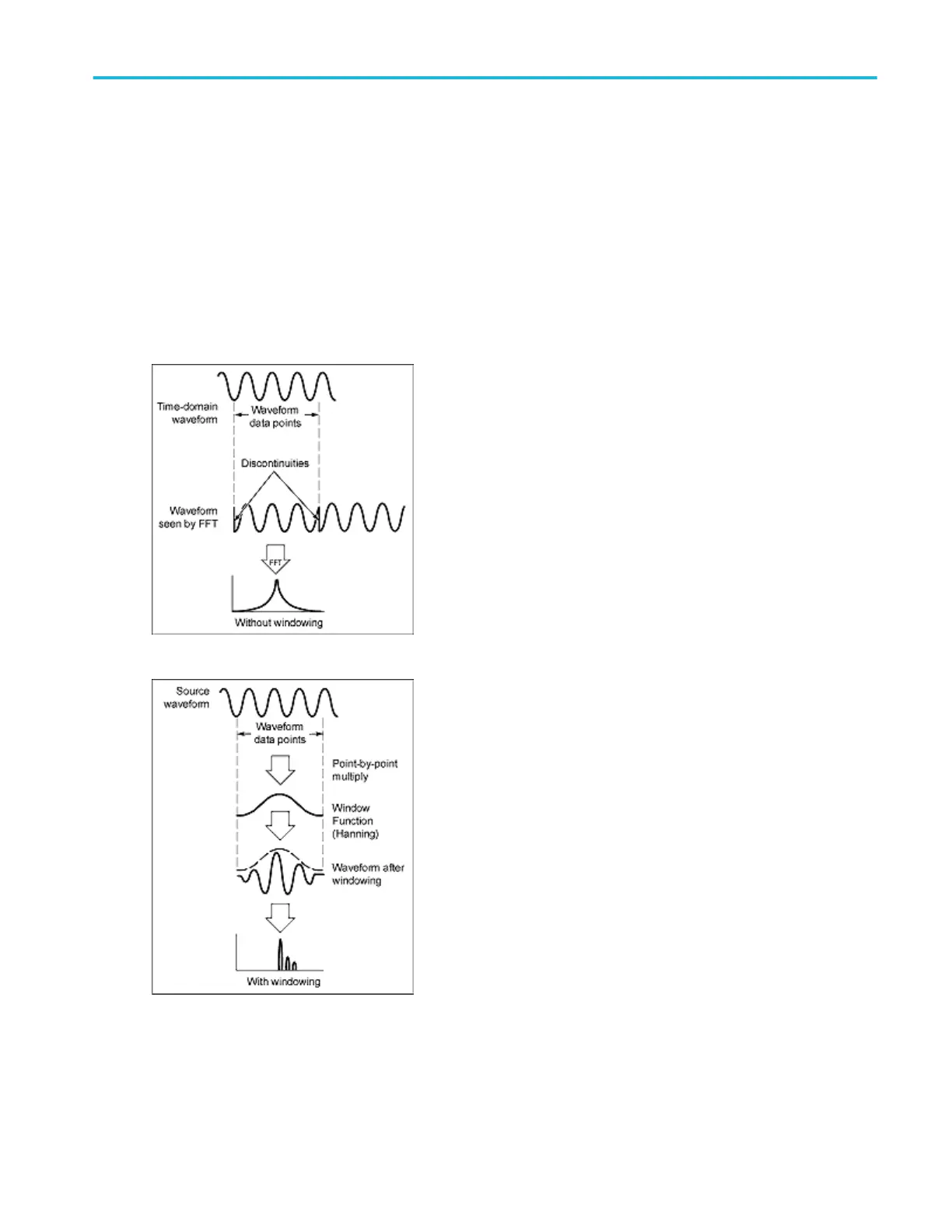FFT windows
The FFT process assumes that the part of the waveform record used for FFT analysis represents a repeating waveform that
starts and ends at or near the same voltage of a cycle. In other words, it is an integer number of cycles. When a waveform starts
and ends at the same amplitude, there are no artificial discontinuities in the signal shape, and both the frequency and amplitude
information is accurate.
A nonintegral number of cycles in the waveform record causes the waveform start and end points to be at different amplitudes.
The transitions between the start and end points cause discontinuities in the waveform that introduce high-frequency transients.
These transients add false frequency information to the frequency domain record.
Applying a window function to the waveform record changes the waveform so that the start and stop values are close to each
other, reducing the discontinuities. This results in an FFT measurement that more accurately reflects the actual signal frequency
components. The shape of the window determines how well it resolves frequency or magnitude information.
■
Continue
■
Previous
Math setups
DPO70000SX, MSO/DPO70000DX, MSO/DPO70000C, DPO7000C, and MSO/DPO5000B Series 257

